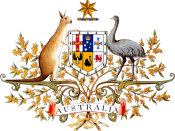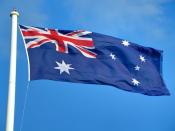QUESTION No. 1
Discuss the macro environmental influences on Sunshine Apples.
The organisation's macro-environment consists of six major forces that shape opportunities and pose threats to the organisation: demographic, economic natural, technological, political and social cultural (Kotler et al., 2001). These factors are less controllable by an organisation but affect the consumer's needs as well as the marketing manager's decisions over the marketing mix variables. Therefore, Sunshine Apples must monitor the macro-environment. In the monitoring of the environment, the company will find fads, trends or mega trends. These fads, trends and mega trends shape opportunities and pose threats, to which the firm must response.
1.1. Demographic
The demographic environment is of major interest to marketers because it involves people, and people make up market. By looking the demographic environment, Sunshine Apples can see the trends of the Australian population growth, Australian aged population structure, Australian geographical shifts in population, ethnic diversity, educational groups and household pattern.
The population growth
Australian population has kept growing during 1998-2003. The increasing population is mainly contributed toward net overseas migration. According to Australia Bureau of Statistic, Australian population will still have significant rise in next decade. The increasing population will create/bring the increasing demand of food. Therefore, there will be some opportunity, especially for the food producers. Sunshine Apples will need to raise the quantity of output apples to be able to supply the increasing demand (see appendix 1-5).
The aged population structure
According to Australian Bureau Statistic, between 1901 and 2001 Australia's population aged 65 years and over has notable increase from 4 percent to 12.7 percent. On the other hand, the proportion of aged less than 15 years population fall from 35.1 percent in 1901 to 20.3 percent in 2001. This reflects Australia's population structure is getting aged (ABS, 2004).


